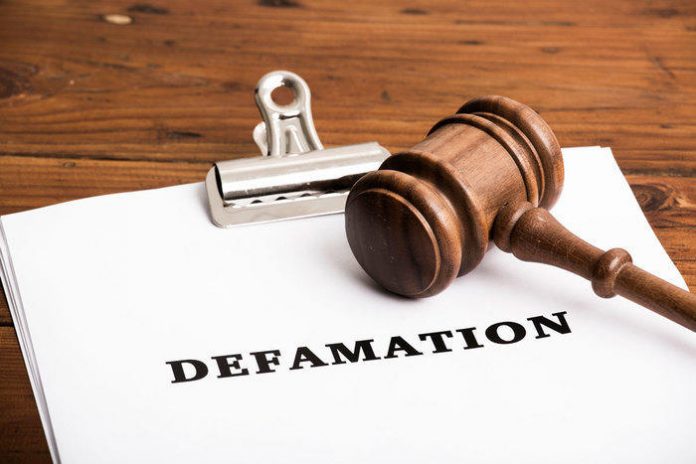This article has been written by Kartikey Baid.
This article has been published by Sneha Mahawar.
Table of Contents
Introduction
The law of Defamation is a kind of abnormality among laws, for despite being defined under Section 499 of the Indian Penal Code, it not only has a criminal aspect but rather a civil aspect also.
Under Criminal law, it is a bailable, non-cognizable, compoundable offence punishable under Section 500 of the IPC which prescribes simple imprisonment up to 2 years or with a fine, or both. Under Civil law, it is dealt with under the Law of Torts where damages can be awarded to the claimant. Defamation is also one of the exemptions under Article 19(2) which puts reasonable restrictions on Freedom of Speech and Expression under Article 19(1)(a) of the Constitution.
Types of damages in civil defamation
Nominal damages
This type of damages is granted by the court to acknowledge the fact that violation of a legal right has occurred, however, the court is of the view that no actual damage has taken place due to such violation.
Contemptuous damages
This type of damages is awarded when the court holds a very low opinion of the Plaintiff’s claim. The court recognizes that although the plaintiff has suffered substantial loss but doesn’t deserve to be compensated to full restitution.
Compensatory damages
In contrast to Nominal Damages, this type of damages is awarded by the court in order to compensate the aggrieved party for some actual and substantial loss caused due to violation of a certain legal right. Expenses like medical costs, job loss, lost income can be covered. The goal is to bring the aggrieved party to the condition it would be in had the violation of his/her right not taken place.
Aggravated damages
Such damages are awarded to compensate for intangible or non-pecuniary losses in addition to tangible losses suffered by the aggrieved party. The goal is to make good for deprivations such as loss of reputation, humiliation, mental distress, etc.
Exemplary/Punitive damages
This type of damages is awarded in order to punish the defendant and make an example out of him/her. The amount awarded in such cases exceeds the actual loss suffered by the aggrieved party. In Mathias v. Accor Economy Lodging, Inc., it was observed by the 7th Circuit Court of the United States that one of the functions of Exemplary or Punitive damages is to relieve some pressure of the criminal justice system by the way of providing a Civil alternative to minor crimes. It was also observed that such damages limit a tortfeasor’s ability to profit from illicit activities.
Exemplary/ Punitive damages in India
It is a settled point of law in most common law countries such as India and England that Exemplary or Punitive damages can only be awarded in a limited set of situations and with great restraint. The House of Lords in the landmark case of Rookes v. Barnard laid down three circumstances in which Exemplary damages can be awarded-
- Oppressive, arbitrary, or unconstitutional action any the servants of the government;
- Wrongful conduct by the defendant which has been calculated by him for himself which may well exceed the compensation payable to the claimant; and
- Any case where exemplary damages are authorised by the statute.”
The latter case of Cassell & co. ltd. v. Broome upheld the aforementioned categories while also making important clarifications as to what factors are to be dealt with while deciding if the aggrieved party qualifies to receive Exemplary Damages or not. The court gave out the following factors to be considered-
- The burden of proof is to be laid on Plaintiff.
- The mere fact that the case falls under one of the categories laid down in Rookes (Supra) doesn’t automatically qualify it for Exemplary Damages.
- The Jury/Judge must be satisfied that the exemplary or punitive component is not satisfied by the figure compensating actual damages caused to the plaintiff.
- The total figure awarded to the plaintiff as exemplary damages should be substituted for the adequate solatium and not an addition to it.
- The word ‘fine’ shall not be used synonymously with exemplary or punitive damages.
In India, the Supreme Court has adopted the principles laid down in Brookes and Cassel in a number of cases (Ghaziabad Development Authority v. Balbir Singh; Lucknow Development Authority v. M.K.Gupta). However, it is worth noting that the Apex court has borrowed these principles in cases of abuse of authority causing a violation of constitutional rights by public authorities. It is yet to be found out if the same standards are to be applied by the court in other cases such as libel or slander of goods.
High Courts, however, have applied the same principles in tort suits such as libel and have thought them to be a befitting test to determine the applicability of Exemplary Damages. In the Hindustan Unilever Limited v. Reckitt Benckiser India Limited, the Delhi High Court reaffirmed the principles laid down in Brookes with reference to those laid in Cassel and applied the same to award exemplary damages to the plaintiff.
The Bombay High Court in the Case of Rustom K. Karanjia and Ors. v. Krishnaraj M.D. Thackersey and Ors. clarified that the factor of insult or mental distress caused by the actions cannot be accounted for while determining Exemplary damages. Observing-
“Therefore, aggravated damages may be awarded within the compensatory principle in circumstances specifically referred to above, viz., if there has been any kind of highhanded, oppressive, insulting or contumelious behaviour by the defendant which increases the mental pain and suffering which is caused by the defamation.”
Indian Courts alongside English and American courts have recognised the difficulty faced by corporations in proving the exact quantum of damage caused to them and also recognised the importance of reputation, not only for individuals but also for corporations. Hence, allowing approximate calculation of damages. As noted in Story Parchment Co. v. Paterson Parchment Paper Co.,
“The wrongdoer is not entitled to complain that they cannot be measured with the exactness and precision that would be possible if the case, which he alone is responsible for making, were otherwise… If the damage is certain, the fact that its extent is uncertain does not prevent a recovery.”
Conservative approach
The courts, both in England and India have taken a very tempered and restrictive approach while awarding Exemplary damages. Courts in both jurisdictions have accepted and thoroughly applied principles laid down in Brookes and Cassel.
Delhi High Court in the case of Hindustan Unilever Limited (Supra) noted with caution-
“….most crucially-the punitive element of the damages should follow the damages assessed otherwise (or general) damages; exemplary damages can be awarded only if the Court is “satisfied that the punitive or exemplary element is not sufficiently met within the figure which they have arrived at for the plaintiff’s solatium”.
The court further observed in the same judgment,
“The danger of not following this step by step reasoning would be ad hoc judge centric award of damages, without discussion of the extent of harm or injury suffered by the plaintiff, on a mere whim that the defendant’s action is so wrong that it has a “criminal” propensity or the case merely falls in one of the three categories mentioned in Rookes.”
The United States Supreme Court in the case of Exxon Shipping Co. et al v. Baker et al observed,
“The real problem, it seems, is the stark unpredictability of punitive awards. Courts of law are concerned with fairness as consistency, and evidence that the median ratio of punitive to compensatory awards falls within a reasonable zone, or that punitive awards are infrequent, fails to tell us whether the spread between high and low individual awards is acceptable. The available data suggest it is not.”
Even in Cassel (Supra), the court took a doubtful view of the extent to which Exemplary damages can be awarded in the cases concerning the second category given in Rookes (Supra). Noting that it is a contentious position to decide as to who should pocket the exemplary damages and finally settled on the opinion that the aggrieved party, however not ideal, is the best available place for such compensation to land.
The conventional wisdom applied in India and elsewhere while awarding exemplary damages is one of restraint and mindful of not using them as a way to replace or subvert criminal punitive measures. The courts have time and again opined that such damages are to be awarded as an exception rather than a norm.
Conclusion
Hence, the guidelines laid down in two landmark English cases which we have discussed extensively, i.e., Rookes (supra) and Cassel (supra) have been widely followed by courts in India.
However, there is still a need for the courts to layout clear-cut guidelines tailored to suit Indian circumstances. The Supreme Court has done so in the cases of the first category given out in Rookes (supra). The same is warranted for cases falling under the second category so that the courts around the country can use a uniform test to determine the need or lack thereof to grant Exemplary Damages.
Students of Lawsikho courses regularly produce writing assignments and work on practical exercises as a part of their coursework and develop themselves in real-life practical skills.
LawSikho has created a telegram group for exchanging legal knowledge, referrals, and various opportunities. You can click on this link and join:
Follow us on Instagram and subscribe to our YouTube channel for more amazing legal content.
 Serato DJ Crack 2025Serato DJ PRO Crack
Serato DJ Crack 2025Serato DJ PRO Crack











 Allow notifications
Allow notifications



